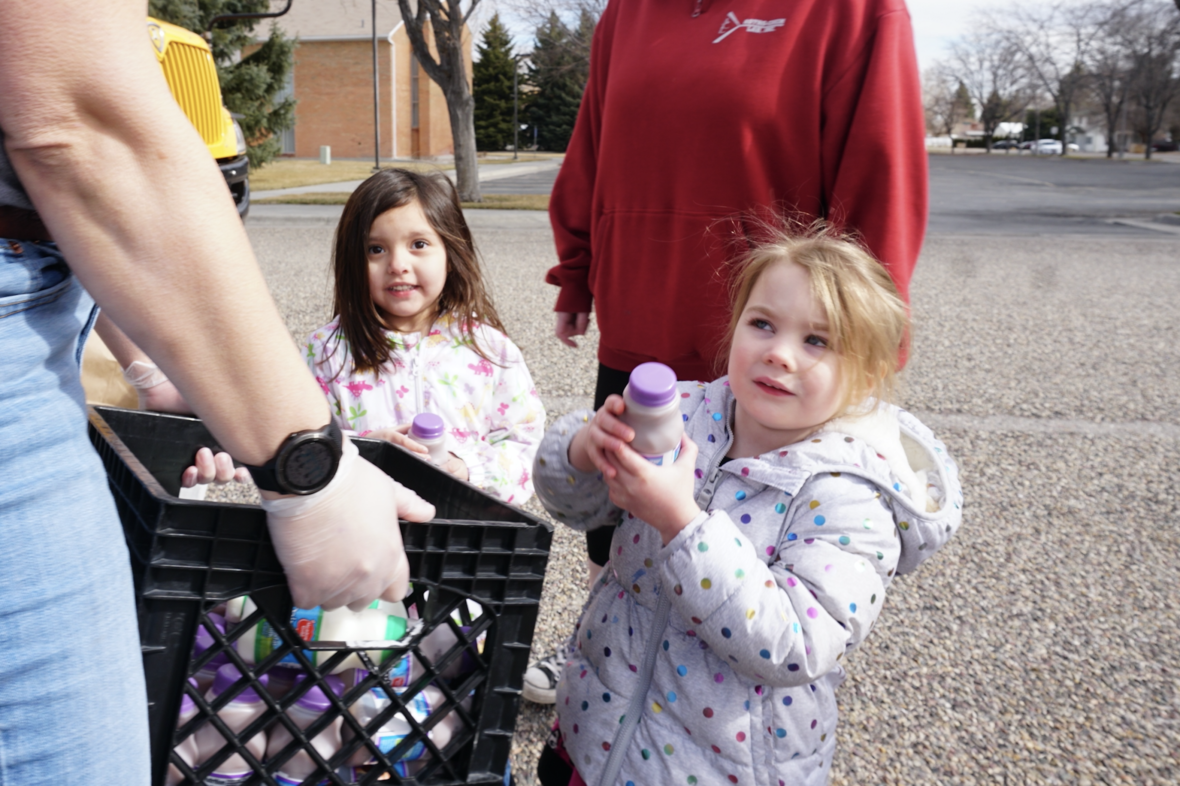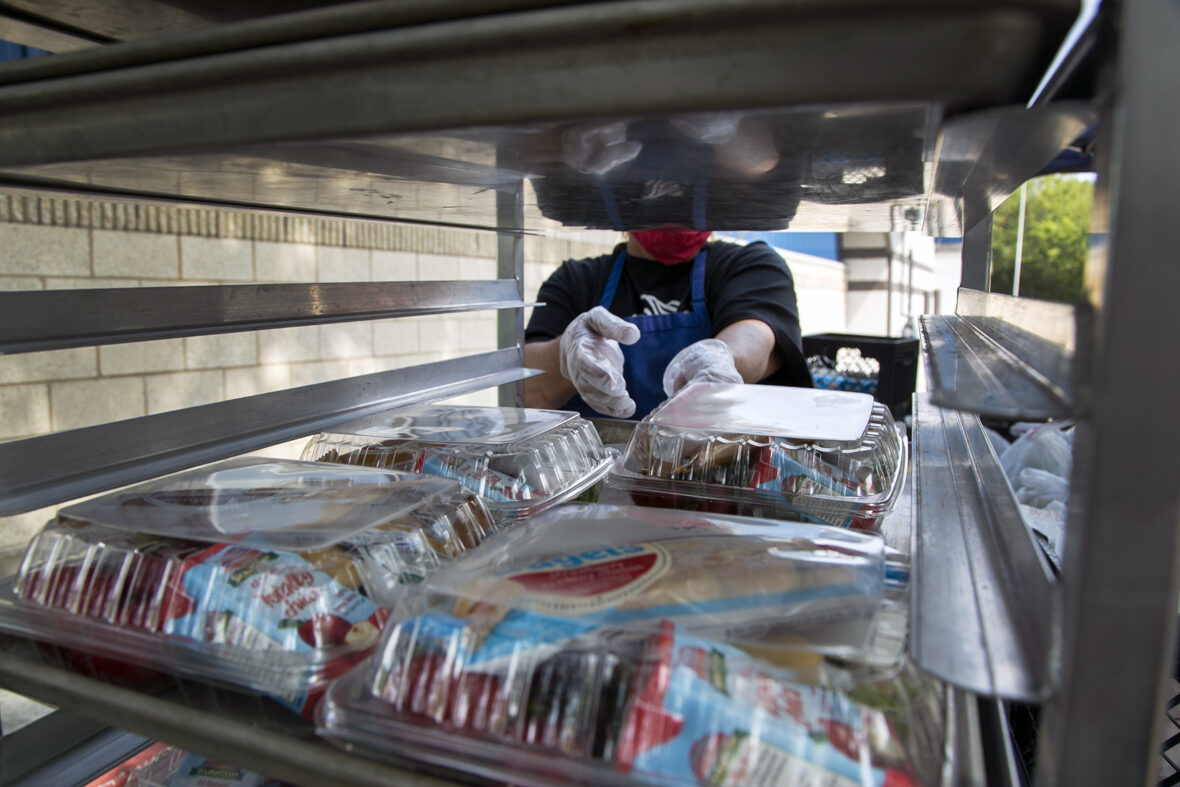Tricia McDaniel stacked containers of chicken salad, strawberries and cinnamon rolls in plastic bags outside the Garden City Boys & Girl’s Club in late August, adding cartons of milk to finish off a grab-and-go meal kit.
McDaniel had perfected the routine over the past six months, when the Boys & Girls’ club handed out 230,000 free breakfasts and lunches to kids across the Treasure Valley. But the chicken salad lunch was one of the last free meals McDaniel planned to pack.
The U.S. Department of Agriculture had allowed school districts and community providers to give all children free food during the spring and summer months under a Summer Food Service Program that feeds kids when schools are closed down. But that program was set to expire in September. The USDA told schools it would have to revert to the National School Lunch Program, which requires students to pay or apply for free and reduced priced meals. Community programs would have to phase out their free summer feeding.
That plan changed suddenly last week.
On Aug. 31 the USDA granted an extension to summer feeding programs through the end of the year. The change means community groups can keep operating food programs, and school districts can decide to offer free meals to kids this fall or move to the more traditional National School Lunch Program.
The last-minute change meant whiplash for child nutrition programs.
Community groups had already said goodbye to summer time staff or told families the free food programs were closing down. School districts were already planning to switch gears to an entirely different nutrition program.
“It brings a whole new definition to a moving target. Things are just changing constantly,” said Colleen Fillmore, Child Nutrition Director for the State Department of Education.

School districts can chose to continue free meals
Switching from one child nutrition program to another might seem simple on the surface. A meal is a meal, right?
In reality, child nutrition is far more complex. Behind each plate of school lunch is a complicated formula of calorie counts and vegetable allotments, financial reimbursements and grocery orders placed months in advance.
Most districts have already started the school year planning for the National School Lunch Program. So reverting to the free summer feeding programs would mean switching back — again.
“It definitely has been a whirlwind,” said Michelle Eggers, Nutrition Services Department Manager in the Nampa School District.
Nampa plans to start offering free food again for the fall. Eggers hopes the move will reach more kids, and keep the food service program financially stable.
When school started in a virtual setting on Aug. 24, Nampa started offering food pickup under the National School Lunch Program and saw a stark drop in interest.
Only about 650 kids a day were picking up food in the first two weeks of school this fall. That’s compared to 4,600 kids who picked up free meals from the school last spring.
The nutrition program is taking a financial hit, Eggers said. She’s hopeful switching back to the Summer Food Service program will help offset that — while also getting more meals to hungry kids. It allows Nampa to bus meals to students who can’t pick food up from the school, and give food to families that didn’t apply for free and reduced priced lunches.
Nampa will receive federal reimbursement for those meals, and make use of large grocery orders that the district had to put in earlier this year without knowing whether students would return to buildings in the fall.
“All of us have the best interest of what serves our community and our students,” Eggers said. “That’s how a lot of our decisions are based: What’s going to be the best thing we can do for the community and the students while remaining financially responsible.”

Community feeding programs can continue
While schools in the Treasure Valley are closed for in-person learning, community centers are picking up much of the day-to-day student supervision that typically happens in school buildings.
Over a hundred students report to day camp at the Garden City location of the Boys & Girl’s Club of Ada County, where staff helps them log into virtual learning and runs child-care for working parents. Under the Summer Food Service program the club can feed those kids and also offer curbside meal pickup for families.
Those free food programs closed down on Aug. 31, but were able to restart on Sept. 8 because of the USDA’s summer feeding extension.
In that one week lag, nutrition director Tracy Yost saw examples of how necessary that free food program really was. For four days, Boys & Girls’ club participants at the Garden City location were asked to bring their own breakfast and lunch. Yost saw students who brought Oreos and a Dr. Pepper for breakfast. Others forgot to bring food or didn’t have the means. Yost stepped in.
“We gave out a lot of meals at no cost, no reimbursement, out of pocket for us,” Yost said.
With the free summer feeding program back on, she doesn’t have to worry about that cost anymore. The federal government will reimburse the meals for kids ages 1-18.
“I’m excited,” Yost said of the extension. “I just wish they would have come out with it before…switching back and forth with programs made it really confusing and hard for everybody.”
